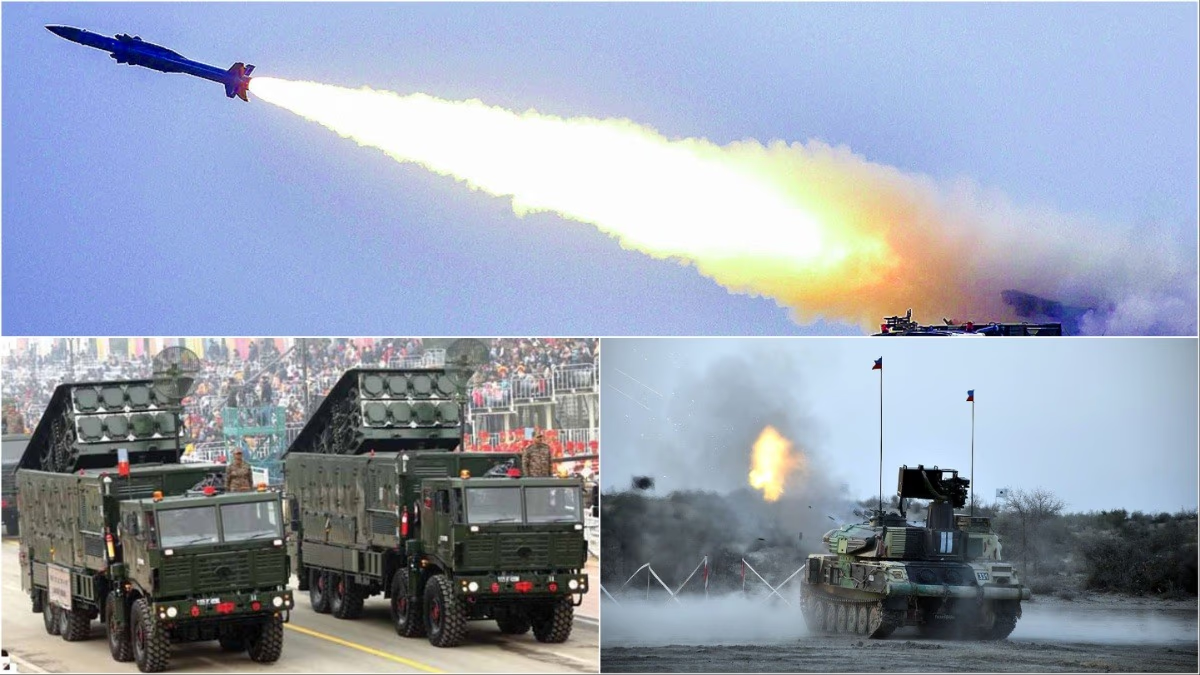On Thursday night, India thwarted a massive missile and drone attack launched from Pakistan targeting cities in Jammu and Kashmir, Punjab, and Rajasthan. Utilizing its S-400 air defense system and anti-drone capabilities, India strategically shot down Pakistani missiles and drones mid-air. These hostile acts targeted key locations such as Jammu's airstrip, Srinagar, Jaisalmer airport, Pathankot airbase, and numerous military installations, but India's exemplary air defense system effectively neutralized all threats.
The Indian Army's S-400 Air Defense Missile System, dubbed as 'Sudharshan Chakra', masterfully intercepted Pakistan's incoming drones and missiles on the night of May 7-8, neutralizing them before any potential threat could materialize. Defense sources confirmed that the S-400 system plays an essential role in India's arsenal, nullifying dangers emanating from Pakistan. Apprehended by the losses suffered in Operation Sindhur, Pakistan has resorted to rash decisions. It's noteworthy that in retaliation for the April 22 Pahalgam terrorist attack, India conducted airstrikes under Operation Sindhur, decimating nine terrorist camps in Pakistan and PoK.
The Indian Army stated, "On the night of May 7-8, 2025, Pakistan attempted attacks on numerous military bases across Northern and Western India, including Avantipur, Srinagar, Jammu, Pathankot, Amritsar, Kapurthala, Jalandhar, Ludhiana, Adampur, Bhatinda, Chandigarh, Nal, Phalodi, Utarlai, and Bhuj through the use of drones and missiles. These threats were neutralized by the Integrated Counter UAS Grid and Air Defense System. Debris of Pakistani missiles and drones are being recovered from various locations in Jammu and Kashmir, Punjab, and Rajasthan."
Defense sources revealed that India successfully downed two JF-17 and one F-16 fighter jets from Pakistan. Additionally, an AWACS (Airborne Early Warning and Control System) aircraft from the Pakistani Air Force was shot down by India. In a retaliatory move, India launched deep-air missile attacks penetrating Pakistani territories, striking cities like Lahore, Sialkot, Islamabad, and other locations. The city of Karachi also faced India's retaliatory assaults.
Understanding the S-400 Air Defense Missile System
The S-400 is recognized globally as one of the most advanced long-range air defense systems. Developed by Russia's Almaz-Antey, it has been integrated into India's Strategic Air Defense Command. The system is engineered to track, intercept, and annihilate aerial threats, including fighter jets, missiles, drones, and even ballistic missiles. With its capability to engage targets across varying distances and altitudes, it serves as a formidable shield for India against adversarial air strikes.
A notable feature of the S-400 is its multi-target engagement capability, allowing it to simultaneously neutralize up to 36 targets using its advanced radar and missile technology. Its prowess at detecting and eliminating threats up to 400 kilometers (250 miles) away makes it highly effective against long-range dangers. It can be mobilized for action within five minutes, boasting twice the efficiency compared with its predecessor air defense systems from Russia. Importantly, the S-400 is versatile enough for deployment by air force, army, and navy.
This system targets aerial threats at altitudes between 0-30 kilometers, including stealth aircraft, drones, and ballistic missiles. It intercepts targets moving at speeds of up to 4.8 kilometers per second. The mobile launcher enables swift deployment from one location to another, posing a challenge for adversaries aiming to pinpoint and target its location.
India has procured five squadrons of the S-400 air defense missile system from Russia, with three already operational and the remaining two expected to be delivered by 2026. In 2018, India signed a defense deal with Russia worth 350 billion rupees for these five squadrons, and the first S-400 system was delivered in 2021. During Operation Sindhur, the deployment of the S-400 enabled India to effectively neutralize aerial threats from Pakistan without incurring any damage.




